Is there a resource with the spectra of these dyes?
Is there a resource with the spectra of these dyes?
—ADVERTISEMENTS—
Books about the chemistry of dyeing
John Shore's
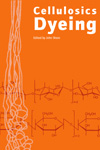
Cellulosies Dyeing
Useful information about the chemistry of reactive dyes, and other dye types used for cotton and other plant fibers
Victor B. Ivanov's
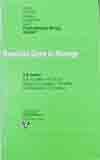
Reactive Dyes in Biology and Medicine
Explains use of reactive dyes for staining proteins or carbohydrates
Heinrich Zollinger
Color Chemistry: Synthesis, Properties, and Applications of Organic Dyes and Pigments

Linda Knutson's book
Synthetic Dyes for Natural Fibers
provides an excellent introduction on how to dye with synthetic dyes.
I was wondering if there is a resource with spectra of these dyes? I have a UV-vis spectrum of the A22 Sahara Sun and 2 Permabril dyes (yellow C2R and orange C3R, which I ordered before I found your website), but was wondering if there is somewhere where there are the spectra of other dyes e.g. the Procion Yellow MX-8G (the Permabril dyes I have have a bit of a shoulder on the peak, unlike the A22 Sahara Sun peak which is much cleaner). In case you are wondering, I am a scientist too. Have previously been working with photographic dyes though!
Yes, I can give you the visible absorption spectra of many of these dyes, and the UV-visible absorption spectra are available for many more. Years ago I borrowed a colleague's spectrophotometer to do some quick absorption spectrum scans for vials of dissolved dichlorotriazine dye, and Olli Niemitalo, who wrote the Dye Mixer Applet, has the UV-visible absorption spectra for many dyes in this class.
You should look at the Dye Mixer Applet to see what Olli did with his absorption spectra:
(this is its permanent address). It's a wonderful resource for dyers. There is more explanation of it in the Dye Forum in a post entitled "How to use the Dye Mixer Applet".
Permabril C dyes are the same dichlorotriazine fiber reactive dyes that every other dye manufacturer calls "M" or "MX", often headed with the description "cold fix dyes"; I suppose that the "C" after "Permabril" may stand for "cold". Permabril yellow C2R and Permabril orange C3R—oh, these names must be mixed up—Permabril Yellow C-3R is almost certainly Colour Index reactive orange 86 (not to be confused with reactive yellow 86, which is yellow MX-8G!), while Permabril Orange C-2R is almost certainly Colour Index reactive orange 4. However, Permabril is Standard Dye's own brand name. My experience with Standard Dye is that they will commonly substitute a similarly-hued mixture of other dyes in the same class if they find it inconvenient to supply the dye that is ordered. If you order from them you must always be careful to specify the Colour Index name and make it clear if substitutes are not acceptable.
It's interesting that your absorption spectrum from the Permabril yellow dye has a shoulder, indicating a non-homogeneous mixture. None of the absorption spectra I've seen for Color Index Reactive orange 86 (yellow MX-3R) has a shoulder. For example, here's one I took, years ago, unfortunately starting only at 400 nm at the left edge since that's near the limit of the visible spectrum:
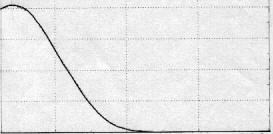

[Note to those unfamiliar with reading dye spectra: the left edge of the graph shows the absorption of violet light; since violet is the opposite, on the color wheel which represents our eyes' pigment system, of yellow, a lot of absorbance in the violet part of the rainbow produces a yellow color for you to see. The right edge shows absorption in the red part of the spectrum; since red is the opposite of green in our eyes' pigmentation system as described by a color wheel, a lot of absorption in just the red region would produce a green dye.]

Olli's wider absorption spectrum for this same dye shows no shoulder at all. Perhaps this is another example of Standard's substituting a mixture of dyes for the pure dye that the customer thought was ordered. The graphs I have show shoulders for C.I. blue 140 (turquoise MX-G), red MX-5B, red MX-8B (fuchsia) and orange MX-2R, but the others tend to be more symmetrical, not counting the known mixtures. Orange MX-2R has only a slight shoulder in the spectra I took:
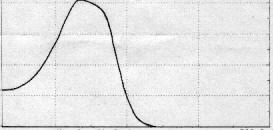

Yellow MX-8G has a much narrower peak than yellow MX-3R, but looks just about as symmetrical, no shoulder at all, in this and other absorption spectra:
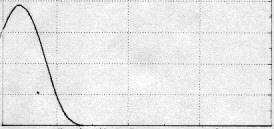

The case of blue 140 is interesting, as the amount of the shoulder peak, probably representing a dimer of the dye, changes with storage; see

Yellow MX-8G has a much narrower peak than yellow MX-3R, but looks just about as symmetrical, no shoulder at all, in this and other absorption spectra:


Do look at my page, "Which Procion MX colors are pure, and which mixtures?". This page lists alternative names for various dichlorotriazine dyes, but doesn't include the Permabril brand names which are kind of screwy. Standard was playing fast and loose with dye names even before they introduced the Permabril name, often inventing totally bogus MX codes, a practice which is common for other dye classes but almost unseen among manufacturers of fiber reactive dyes. For example, they sell violet MX-2R, reactive violet 14, under the name violet MX-G, for no apparent reason; "G" stands for "Gelb", or yellow, although a violet simply cannot be yellowish. (See "What do the letters and numbers in the code name for a Procion MX type dye mean?".) Don't get me wrong, Standard Dye sells good dyes and they can be good to buy dyes from, as long as you are clear about what you will and will not accept, but they have different standards about naming than I and probably most other scientists do.
You can download the absorption spectra data from Olli Niemitalo's Dye Mixer. The jar package of the Dye Mixer is available for download; there's a link on the Dye Applet page. As a jar file, it can be opened with a program that opens zip files (I had to rename it first to have .zip as a suffix). It contains a data file called data.txt, with all the spectra included as digital entries. Here is a graph of the absorption spectra in the Dye Mixer for Procion MX type dyes (the units for the y-axis are pretty much arbitrary):

You can download the absorption spectra data from Olli Niemitalo's Dye Mixer. The jar package of the Dye Mixer is available for download; there's a link on the Dye Applet page. As a jar file, it can be opened with a program that opens zip files (I had to rename it first to have .zip as a suffix). It contains a data file called data.txt, with all the spectra included as digital entries. Here is a graph of the absorption spectra in the Dye Mixer for Procion MX type dyes (the units for the y-axis are pretty much arbitrary):

(Please help support this web site. Thank you.)
Posted: Thursday - September 13, 2012 at 08:50 AM
Follow this blog on twitter here.
Quick Links
- All About Dyes & Dyeing Top -
- Top of this blog -
- FAQ -
- The Dye Forum -
- How to Tie Dye - How to Batik -
- Books - Toys - Plants -
- Top of this blog -
- FAQ -
- The Dye Forum -
- How to Tie Dye - How to Batik -
- Books - Toys - Plants -
More in this category:
- -
Statistics
Total entries in this blog:
Total entries in this category:
Published On: Sep 13, 2012 11:40 AM
Total entries in this category:
Published On: Sep 13, 2012 11:40 AM
